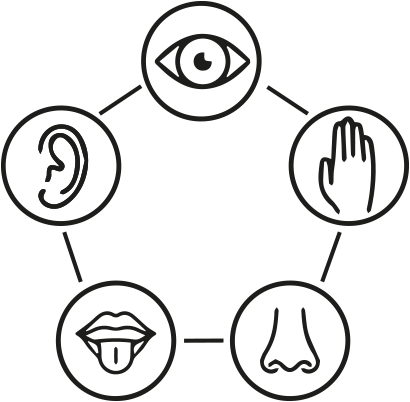| Skins
10 October 2018
Led by:
- Katja Heitmann – dance, visual arts, performance and installation art; what ‘moves’ us;
|
| Intended learning outcomes (more on programme level)
Part of Marres’ Workshops ‘Training the Senses’. https://marres.org/en/program/training-the-senses-en/ |
| Learning objectives (course specific)
Skin as a physical element. What is the role of the skin for the body? What are the smallest movements underlying it? |
| Objective statement (course description)
Our skin keeps us from seeping into the world. The skin holds our insides together, and stops the outside world from coming in. Even though we notice our skin only with damage or signs of age, it is a unique organ, a tender, stretchy, soft, and ultimately porous boundary. It is the elastic and adaptable place of encounter, a territory where the inner fluid breathing landscape of the bodyself meets the outer changeable environment that we share with other humans, animals, plants, rocks and water. We learn through cultural codes to conform and adapt our bodily experiences to what seems appropriate to specific situations. Katja Heitmann is interested in how to choreograph the skin. In this workshop, we will zoom into the skin as a physical element. What is the role of the skin for the body? What are the smallest movements underlying it? |
| Type of course :
extracurricular course |
| Target group :
general audience |
| Teaching method:
workshop |
| Activities
Start:
- Participants walk in the room and see a standing partially naked performer, hunched over in the centre of the room. The participants sit down on the chairs placed in a circle around the performer. The performer starts making very small movements, bending over, straightening, taking deep breaths. The participants are meant to observe.
Training:
- Everyone is asked to stand up and form a circle. They are instructed to do movements such as hold hands out as if one is holding a ball, or touch their face with their hands, massage their face and neck, pat their chest and back, press their hands together, hold them together.
- “We are in a kind of time where we try to optimize the human body as kind of an efficient apparat. We try to get rid of all the wrinkles and make it a very clean, clean and skinny surface and with the idea of ‘what kinds of things do we now have to preserve?’ we started to zoom in physically, more and more on the body. So just think about this: not how the bone is moving, but how the skin is moving.”
- The performer comes out again and the leader tells the participants what to pay attention to, which movements. “We try to see how far, how slow can you actually stretch this movement, so that we could choreograph the skin.”
- The participants are instructed to sit on the floor and stretch out their hands and point away from you. Then they are instructed to connect their outstretched index fingers and then stretch their arms again, over and over. Then they are asked to almost make their index fingers touch and very slowly let them connect.
- “This, our physical sense, the proprioception sense it’s called, is a sense that lets us know, that lets your body know where it stands right now and which shape in relation to the space. You have all those sensors in your body that constantly communicate with your brain. It’s trained to a certain tempo and when you start to slow it down, it’s too little movement for your brain to process the information. So you constantly get signals like: ‘what is happening?’… but the interesting thing is that you can train this sense, you can just train yourself on a different tempo. It’s a beautiful way to look at the human body as a kind of ocean of skin.”
- People stand in pairs, facing each other, and are instructed to put their right hand out, palm facing to the side and almost touch the palm of the other participant, who’s doing the same movement. And then very slowly they must let your palms touch and take hold of each other’s hand.
|
| Assessment of learning:
N/A |
| Effect:
N/A |
| Additional biblio sources (available at Marres):
N/A |
